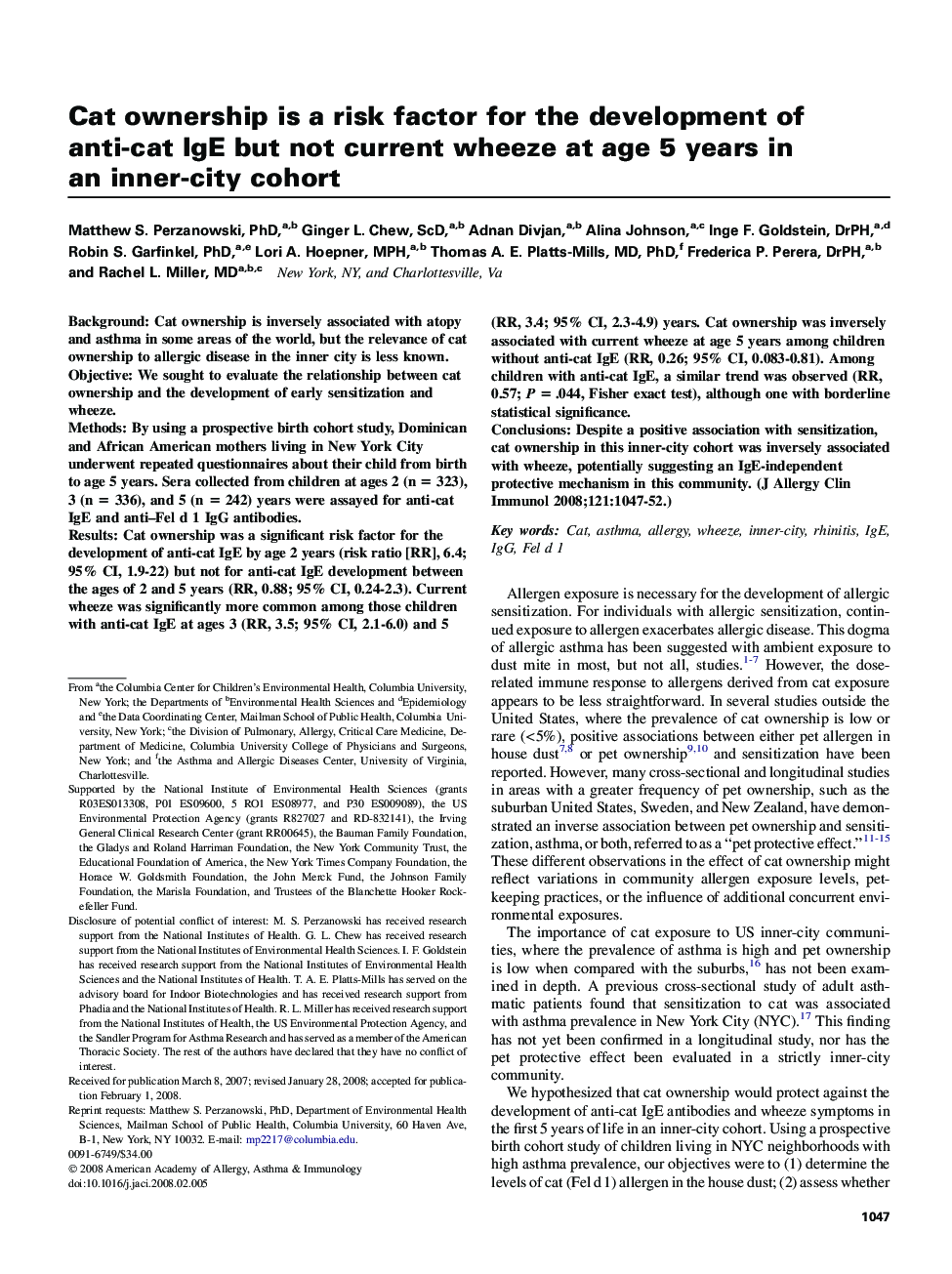| Article ID | Journal | Published Year | Pages | File Type |
|---|---|---|---|---|
| 3201483 | Journal of Allergy and Clinical Immunology | 2008 | 6 Pages |
BackgroundCat ownership is inversely associated with atopy and asthma in some areas of the world, but the relevance of cat ownership to allergic disease in the inner city is less known.ObjectiveWe sought to evaluate the relationship between cat ownership and the development of early sensitization and wheeze.MethodsBy using a prospective birth cohort study, Dominican and African American mothers living in New York City underwent repeated questionnaires about their child from birth to age 5 years. Sera collected from children at ages 2 (n = 323), 3 (n = 336), and 5 (n = 242) years were assayed for anti-cat IgE and anti–Fel d 1 IgG antibodies.ResultsCat ownership was a significant risk factor for the development of anti-cat IgE by age 2 years (risk ratio [RR], 6.4; 95% CI, 1.9-22) but not for anti-cat IgE development between the ages of 2 and 5 years (RR, 0.88; 95% CI, 0.24-2.3). Current wheeze was significantly more common among those children with anti-cat IgE at ages 3 (RR, 3.5; 95% CI, 2.1-6.0) and 5 (RR, 3.4; 95% CI, 2.3-4.9) years. Cat ownership was inversely associated with current wheeze at age 5 years among children without anti-cat IgE (RR, 0.26; 95% CI, 0.083-0.81). Among children with anti-cat IgE, a similar trend was observed (RR, 0.57; P = .044, Fisher exact test), although one with borderline statistical significance.ConclusionsDespite a positive association with sensitization, cat ownership in this inner-city cohort was inversely associated with wheeze, potentially suggesting an IgE-independent protective mechanism in this community.
